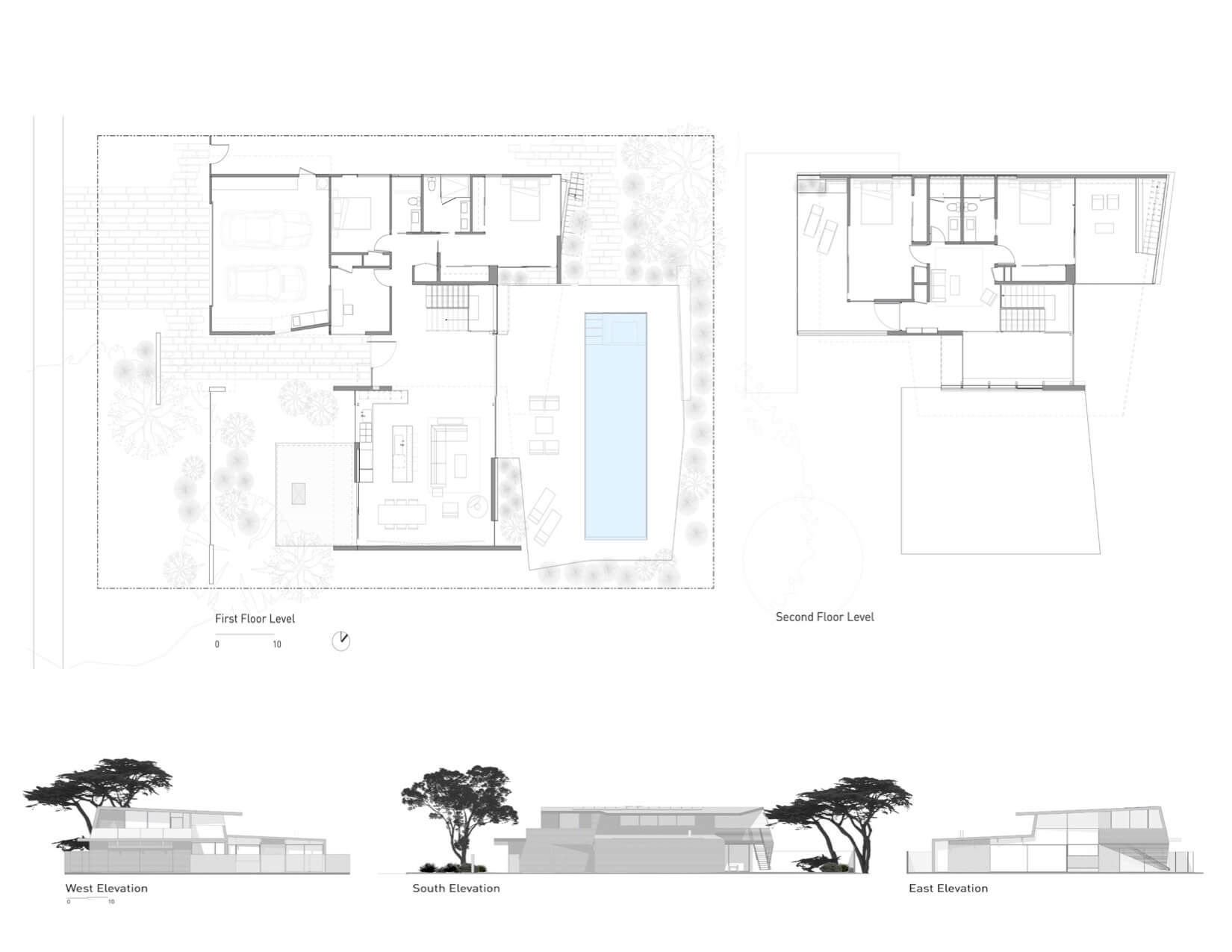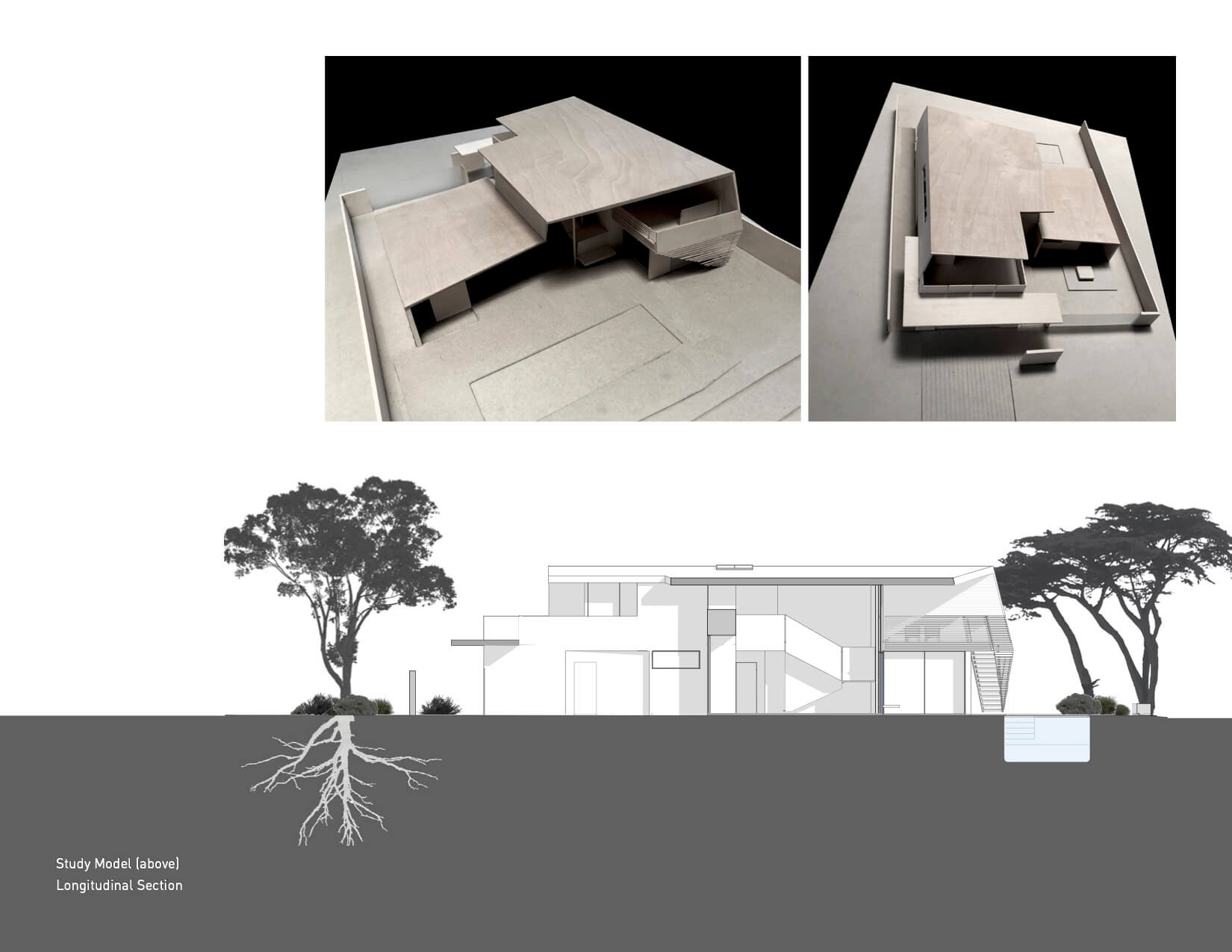The design consists of transforming a 1950’s Joseph Eichler home. Using a complimenting modern material palette, the design utilizes the primary floor plan, transforming the existing space and forming the new second floor by folding out a series of horizontal and vertical planes of the ground floor. The new roof form creates a large central area and links the bedroom wing with living area. Poured-in-place concrete masses are used to support the roofs, upper floor and cantilevered main stair landing.
The dwelling is designed for a young deaf family, who desired an expanded open plan that incorporates Deaf-Space, creating ample transparency throughout the home, where vision and touch are a primary means of spatial awareness and orientation.
The main living space is situated on the ground floor and offers expansive living spaces that extend into the landscape. Fired black basalt stone pavers flows throughout the ground floor complimenting the cedar wood ceiling of the new roof. Two existing bedrooms and home office are reconfigured to allow more transparency to the gardens. The second floor accommodates an extended family with a set of bedrooms, bathrooms, and sleeping porches.
The design of the building incorporates many passive and active sustainable energy elements. The East and West facades are widely open to allow for passive solar heating in the winter and natural light year round, while deep overhangs provide shading in the summer. In-floor hydronic radiant heating provides clean and efficient heat, especially when combined with the high thermal mass of concrete slabs. For renewable energy the project integrates photovoltaic panels, solar water heating and rain catchment systems to offset energy and water loads.


